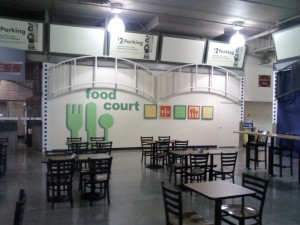Back in early October I headed out one morning to see for myself just how many cyclists are using some of the main bike-lanes in our city. Despite bike enthusiasts constantly tossing out numbers claiming as many as over 10,000 people use bicycles to commute in and out of downtown Calgary daily, it simply did not seem like I was seeing the number of bike riders on the street to justify these rather grand claims. On parking myself on a few main bike commuter routes and doing a formal count during rush hour my suspicions were confirmed.
One Calgary bike lane had only 2 bikes on it during an entire hour during the rush. The 10st NW bike lane as a main artery to downtown Calgary carried a grand total of 51 bike riders during the morning rush on a nice clear day.
Upon posting these findings, the rather hysteric and somewhat extreme self-styled bike crowd in Calgary were predictably apoplectic that somebody dared question and verify the veracity of their exaggerated claims of bike ridership in Calgary. Excuses were made and new numbers were cooked. Some excellent creative accounting of the rather flimsy bike rider counts out there was used but the bottom line simply can’t be escaped; only a tiny minority of Calgarians are using bike lanes to commute to work!
I felt I needed to be fair here though. Perhaps that period of October was a one-off sort of situation. Maybe there was some sort of religious observance where the bike cult all had to pay homage to the great cycle Gods that week or something. In light of that possibility, I went back out to the 10 St NW bike lane to get yet another count.
Well, on a reasonable morning for this time of year, the winds were down and the road was simply wet, on a main artery into Calgary’s downtown on a bike lane that was well established during the busiest hour of the day………….
 I didn’t even need my fancy clicker. I could have taken off my shoes and counted the grand total of 17 bikes that used the 10 St. NW bike lane during the busiest hour of the day.
I didn’t even need my fancy clicker. I could have taken off my shoes and counted the grand total of 17 bikes that used the 10 St. NW bike lane during the busiest hour of the day.
10 St NW carries thousands of cars daily and is a terrible choke-point for traffic coming in and out of Calgary’s core. Despite that, 1/3 of the road was taken from vehicles and designated for bike use which as we can see today is pretty much pointless.
What pissed me off even more was that two bike riders were actually ignoring the bike lanes built for them and rode on the sidewalk instead while I was there. With the light at the time and with my parking spot, I did not catch shots of them in action though I did get pictures of their tracks.

This action of bike riders ignoring and refusing to use these very expensive bike lanes is clearly a chronic thing as a sign actually was posted (and clearly ignored) telling bike riders not to ride on the sidewalk. If we subtract those two bike riders from my count we get 15 actually using the lanes in rush hour.
Being ever generous though, I thought I should venture further in search of this elusive crowd of bike riders that is packed so tightly that we must take away automotive lanes and give them to bike riders for their commute.
I took a deep breath and ventured deeply into prime hipster habitat (Kensington) seeking this pileup of bikes. I began at the Safeway. Maybe all the bike commuters had paused to get granola and organic-bean sprouts or something.
 While the Kensington Safeway provides loads of bike racks, not a single bike was to be found in them. The mystery continues. Following the scent of patchouli, I ventured deeply into this foreign district and found an actual bike shop. The outside had a grand variety of bike racks.
While the Kensington Safeway provides loads of bike racks, not a single bike was to be found in them. The mystery continues. Following the scent of patchouli, I ventured deeply into this foreign district and found an actual bike shop. The outside had a grand variety of bike racks.
 One would think that a bike shop within Kensington with a bike lane leading to it would be a virtual Mecca of bikes. As can be seen though, not a one was parked in the many bike racks. The grand migratory herd of Calgarian bike riders still eluded me.
One would think that a bike shop within Kensington with a bike lane leading to it would be a virtual Mecca of bikes. As can be seen though, not a one was parked in the many bike racks. The grand migratory herd of Calgarian bike riders still eluded me.
I carried on with my venture to downtown Calgary. I saw the occasional bike track, but alas no riders as I crossed one of our many many many pedestrian bridges.

I found myself at Calgary’s Eau Claire Market. No bikes were found to be parked there either though but my tour of that dismal little mall ties well into all this.

Eau Claire Market was a terribly planned and incredibly expensive experiment that was created on the flawed logic of: “If you build it they will come!” Sorry kids, that only works in movies about cornfields. In real life one must identify demand before creating a supply.
Bike lanes are based on that logic too. Despite 20 years of effort, no measurable increase in the percentage of people who commute with bikes in Calgary has happened. That little bit of reality unfortunately is still not stopping idealistic city planners and delusional cycle aficionados from promoting and indeed wasting countless dollars and space on bike lanes for which there is no real demand.
Eau Claire Market was supposed to be Calgary’s great entry into a cosmopolitan and “vibrant” world of an active core. This was going to be Calgary’s Granville Island! People would come from around the world to visit Eau Claire and drink at the (very short lived) Calgary Hard Rock Cafe! Trendy development and pedestrian friendly services would naturally expand from this anchor and Paris would be envious of this profound exercise in urbanism!
Alas, reality prevailed. Currently space can hardly be given away in the Eau Claire Market. Small specialty stores with hand-drawn signs fill some spaces while others languish empty. Even the food fair has spaces that they can’t lease out (quite and accomplishment downtown) and the mall itself is cavernous and depressing.



 Decades of effort and countless marketing dollars spent would not change the simple reality that Calgarians are suburban people. We don’t want to hang around downtown with it’s purposely inflated parking costs and purposely choked traffic. We have no interest in an urban mall with poor selection where we would be expected to lug our overpriced purchases onto public transit in order to bring it back to our homes. This will not change folks.
Decades of effort and countless marketing dollars spent would not change the simple reality that Calgarians are suburban people. We don’t want to hang around downtown with it’s purposely inflated parking costs and purposely choked traffic. We have no interest in an urban mall with poor selection where we would be expected to lug our overpriced purchases onto public transit in order to bring it back to our homes. This will not change folks.
With decades of effort, the social engineering experiment of making us all ride bikes to work in a winter nation is failing too.
The 10 St bike lanes are well established. They built it but alas the bikers did not come (nor will they ever). Today was no exception. These bike lanes and this bike demand is supposed to be all year round. At -11 this morning, it was actually much warmer than many mornings will be throughout the winter. On days when it is hot people are not going to be too willing to ride home on a bike while wearing a suit either by the way.
The bike lobby is persistent and extreme though. Yes I do refer to them as the “bike cult” at times and I think it is accurate. Many (possibly most) people enjoy going out for a bike ride now and then. There is nothing wrong with that and it is these recreational users that bike fanatics use to pad their polls trying to exaggerate bike demand. There is a world of difference between a recreational user and a bike cultist though.
The bike cultists are much like vegans, you don’t have to look hard to spot them (they will self-identify if you do not open the conversation on their spandex wearing at the wedding) . These people wear their lifestyles on their sleeves and they live for their hobby. Their twitter monikers invariably will contain the word bike within them and usually include a picture of them on a bike or of a bike they wish they could own.
Hey, it is a free world. By all means wrap yourself around the activity of biking. FSM knows there are far worse obsessions for people to have. The problem with the bike cult though is that like vegans they generally are sanctimonious and demanding. It is not enough that they have chosen what they feel to be a higher way, they now need services to accommodate their choices and they feel that others must be converted. That is when the line from enthusiast to cultist gets crossed and ire gets raised.
Red Deer got rid of some of their idiotic bike lanes last summer. Calgary is getting rid of a purely stupid notion of a bike lane in Lakeview now and Toronto dealt with outright hysteria from their bike cult when they got rid of a completely redundant bike lane that had a bike track running parallel only one block away.
Look at the drama queens in action below as a pointless bike lane is removed in Toronto a few weeks ago. No folks, calling these people cultists is not an exaggeration.



Do we want to be a competitive destination as a city? Do we want to reduce pointless idling? Do we really want a “vibrant” core? We need traffic flow for that and bike lanes choke that.
The case is being made about how bikes take cars off roads. That is a load of horse poop. What the bike lanes have done is choke vehicular traffic however. On 10th St in Calgary 1000s of cars pass daily while the bike lane can barely draw dozens. The number of autodrivers suddenly embracing bike use will have to increase a hundredfold before the waste of dedicating a third of a lane to them can be somewhat justified.
On 11 St SE two lanes were removed to make bike lanes. A person is lucky to see even a single bike ever use those lanes but it is always easy to find traffic hopelessly snarled as it is packed into two less lanes.
The world revolves on supply and demand. Social engineers keep trying to fight that principle but they inevitably lose. The problem is that the loss comes at a great cost in the battle.
People in Calgary are increasingly moving to the suburbs and now outside of the city altogether causing tax-revenue losses while they still commute on city streets. Businesses are now moving to the suburbs and out of the city following the citizens as we become increasingly unbalanced in Calgary.
Let’s plan realistically with citizen demand in mind for a change. Plan for vehicular traffic as it simply is growing despite all city hall efforts to fight it. Quit putting in stupid bike lanes at the expense of automotive lanes. The demand is simply not there nor will it ever be.
A pushback will happen eventually. I fear for how much mess will be made of our city infrastructure before that happens though.
 Once upon a time the state took it upon itself to be the moral governor in Canadian lives. Policies outlawing various sexual acts taking place between consenting adults were myriad and were enforced. These policies were modeled to save us from ourselves and to keep our mortal souls away from eternal condemnation in hell and they were strongly supported by people in the religious right as they used various texts to explain why the state must contain and condemn these acts determined to be unethical by what essentially were powerful interest groups.
Once upon a time the state took it upon itself to be the moral governor in Canadian lives. Policies outlawing various sexual acts taking place between consenting adults were myriad and were enforced. These policies were modeled to save us from ourselves and to keep our mortal souls away from eternal condemnation in hell and they were strongly supported by people in the religious right as they used various texts to explain why the state must contain and condemn these acts determined to be unethical by what essentially were powerful interest groups.





















